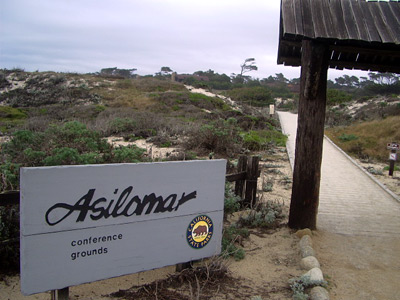
For a high-profile chef from New York City, it takes a certain amount of moxie to stand up at the recent Ecological Farming Conference at Asilomar and admit how much you love foie gras. It's especially provocative if you’re Dan Barber, buddy of Michael Pollan, chef of the acclaimed Blue Hill and Blue Hill at Stone Barns restaurants, and very vocal advocate of local, seasonal, and sustainable cooking.
Sitting in the main reception room, a few minutes before the afternoon plenary session was to begin, I overheard Barber catching up with a farmer colleague. It seemed he’d just found out that he was expected to lecture, not just answer questions, on the panel alongside Annie Somerville of Greens and Judy Wicks of Philadelphia’s White Dog Cafe. "I'm just going to tell the foie gras story," he said, sounding exhausted, and I thought, “Foie gras? At Eco-Farm? Does this man know where he is?” After all, this is a confab of organic farmers and food-justice activists. Sure, there’s a passion for deliciousness, but in general, the talk is kale, not champagne.
Onstage, Barber was unapologetic: for all his dirt-first politics, he’s a chef in love with flavor and texture, and to him, foie gras was the epitome: sweet, fatty, unctuous, able to make anything paired with it taste fantastic.
Why? Because it is, essentially, a small amount of liver flavoring a whole lot of fat. It gets that way due to gavage, a controversial practice of force-feeding ducks and geese until their livers swell to several times their normal size. Chicago recently repealed a two-year ban on serving it in the city’s restaurants; Governor Schwarzenegger signed a bill outlawing the making and selling of force-fed foie gras in California by 2012.